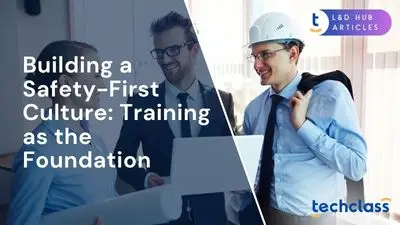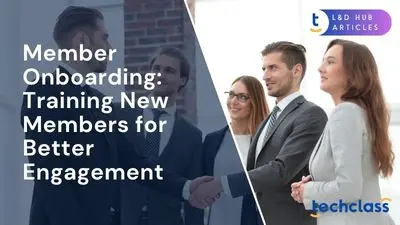
Change is a constant in today’s business world, yet leading organizational change successfully remains a major challenge. Studies have found that roughly 70% of all change initiatives fail to meet their goals. This high failure rate often comes down to resistance, poor planning, or lack of a clear roadmap. For HR professionals, business owners, and enterprise leaders, the message is clear: having a structured approach to guide change is crucial for success.
This is where change management models come in. These models are proven frameworks that help leaders plan, implement, and sustain change more effectively. Rather than handling change in an ad-hoc way, a good model provides step-by-step guidance and considers the human side of transition. By using a framework, leaders can anticipate challenges, reduce employee resistance, and increase the likelihood of achieving the desired outcomes of a change initiative. In short, change management models act as a compass for navigating the complexities of organizational transformation, whether it’s a minor process update or a major strategic overhaul.
In the sections below, we will explore some of the most recognized change management frameworks that every leader should know. Each model offers a unique perspective on how to drive change—understanding these can help you choose the right approach (or combination of approaches) for your organization’s needs.
Social psychologist Kurt Lewin’s model is one of the earliest and most influential frameworks for managing organizational change. Developed in the 1940s, Lewin’s Change Management Model breaks the change process into three high-level stages: Unfreeze, Change, and Refreeze. Each stage addresses how to move people and processes from the current state to a new desired state:
Lewin’s model is praised for its simplicity and clarity. It’s especially useful for relatively clear-cut changes or when an organization needs a straightforward roadmap. However, critics note it may be too simplistic for complex, continuous change environments. In fast-moving industries, change is often ongoing rather than a one-time event, so leaders might cycle through “unfreezing” and “changing” repeatedly. Still, Lewin’s three-step model remains a fundamental starting point for understanding change management and is often the basis for more elaborate frameworks.
Dr. John Kotter, a Harvard Business School professor, introduced an 8-step model for leading change, based on studying countless organizations undergoing major transformations. Kotter’s 8-Step Change Model provides a comprehensive, step-by-step plan that puts heavy emphasis on enlisting people’s support and aligning the change with a clear vision. The eight steps in Kotter’s model are:
Kotter’s model is particularly suited for large-scale changes like mergers, strategic shifts, or digital transformations. It’s thorough and addresses both the rational and emotional aspects of change. One real-world example of this model in action is its use in digital transformation projects: leadership might start by creating urgency around digital disruption, then build a team of tech-savvy change champions, and so on through the steps. The strength of Kotter’s framework lies in its focus on cultivating buy-in and systematically eliminating obstacles. However, implementing all eight steps can be time-consuming, and skipping steps or rushing can jeopardize the effort (Kotter warns that skipping steps is a common reason for failure). When followed diligently, this model helps foster an engaged workforce that’s prepared to embrace and sustain the change.
The ADKAR Model is a goal-oriented change management framework developed by Jeff Hiatt of Prosci, and it focuses on the people side of change. “ADKAR” is an acronym standing for Awareness, Desire, Knowledge, Ability, and Reinforcement. Unlike some other models that outline organizational steps, ADKAR zeroes in on the outcomes individuals need to achieve for a change to be successful. Here’s what each component means:
The ADKAR model is often used in scenarios like technology implementations, process improvements, or other changes that require individuals to alter their work habits. Its strength lies in pinpointing barriers at the individual level—if a change is stalling, ADKAR helps identify whether the issue is that people don’t understand the need (Awareness), don’t want it (Desire), don’t know how (Knowledge), can’t implement (Ability), or are not being supported to continue (Reinforcement). For example, imagine a hospital rolling out a new patient record system: ADKAR would prompt managers to ensure that doctors and nurses know why the new system is needed (perhaps to reduce errors), are motivated to use it (perhaps by seeing how it saves them time), have been trained in it, are given time to practice it, and then see the new system become standard with ongoing support. By focusing on these five people-centered goals, the ADKAR model helps drive change from the ground up, ensuring that employees are truly bought in and capable of making the change successful.
The McKinsey 7-S Framework is a classic model that provides a holistic view of an organization during times of change. Developed by consultants at McKinsey & Company in the late 1970s, this framework isn’t a step-by-step change process but rather a tool for understanding and aligning key elements of an organization. The premise is that there are seven interrelated components — all starting with “S” — that together determine how ready and able an organization is to change. The seven S’s are:
The idea behind the 7-S Framework is that for a change initiative to succeed, all seven of these elements should be aligned and mutually supportive. If one element is out of sync (say, the company’s structure is too rigid for a new, agile strategy), the change can falter. Leaders can use the 7-S model as a diagnostic tool: for example, if a company is merging with another, the 7-S checklist helps ensure nothing important is overlooked – strategy (do we have a unified plan?), structure (how will teams be restructured?), systems (how do we integrate IT and processes?), shared values (what cultural values do we want to preserve or create?), skills (do we have the right competencies in our combined staff?), style (how do leaders of both companies manage and can we find a common approach?), and staff (will there be redundancies or new roles?).
In practice, the McKinsey 7-S Framework has been widely used in large-scale organizational change like mergers, acquisitions, or large reorganizations. It’s appreciated by HR and change managers as a way to cover both “hard” factors (strategy, structure, systems) and “soft” factors (style, staff, skills, shared values). One example could be a bank undergoing digital transformation: strategy might shift to focus on mobile banking, structure might change by creating a digital services division, systems will include new banking software, shared values might evolve to prize innovation, skills will require more IT talent, leadership style might shift to be more collaborative, and staff considerations might involve retraining tellers as digital customer service reps. The 7-S Framework helps ensure all these pieces fit together. By analyzing and adjusting each “S” as needed, leaders increase the likelihood that the change will be holistically successful and not undone by an overlooked component of the organization.
While many change models focus on external steps and organizational processes, Bridges’ Transition Model zeroes in on the internal psychological journey people experience during change. Developed by William Bridges, a change consultant, this model differentiates between change (the external event or situation) and transition (the internal emotional process people go through). Bridges’ Transition Model outlines three phases of transition that individuals typically move through: Ending (Letting Go), the Neutral Zone, and the New Beginning.
Bridges’ model is valuable because it reminds leaders that managing change is not just about executing a plan, but also about supporting people through their emotional adjustment. For instance, consider a scenario where a company implements a major cultural change like adopting a more agile way of working. Using Bridges’ lens, leadership would proactively help employees let go of the old hierarchical mindset (maybe by explaining why that old way won’t work anymore), guide them through the neutral zone of new team dynamics and trial-and-error (being patient with early missteps), and then reinforce the agile practices once teams start seeing success. The model has been widely applied in situations such as layoffs, mergers, or strategic pivots—any change where employees’ acceptance is crucial. By acknowledging the human side of change, Bridges’ Transition Model helps maintain morale and productivity through the turmoil of change, ultimately making the change more sustainable.
The Kübler-Ross Change Curve is originally rooted in the five stages of grief, but it has been adopted widely in change management to map out how people emotionally respond to significant change. Psychiatrist Elisabeth Kübler-Ross first introduced the five stages (denial, anger, bargaining, depression, acceptance) to describe how terminally ill patients cope with dying. In a workplace change context, the Kübler-Ross Change Curve provides insight into the emotional journey employees might undergo when faced with drastic changes like reorganization, layoffs, or even the introduction of new technology.
The five stages, in a change scenario, can be described as follows:
It’s important to note that not everyone goes through these stages in order, nor does everyone experience every stage. People can move back and forth through the curve. For example, someone might feel they’ve accepted the change, then encounter a setback that puts them back into frustration or discouragement.
Understanding the Kübler-Ross Change Curve helps leaders and HR professionals empathize with employees and provide the right support at the right time. For instance, during the denial stage, clear and frequent communication is key—address rumors and explain facts to break through the denial. When anger surfaces, it’s important to listen to concerns and avoid dismissing feelings; providing forums for employees to vent or ask tough questions can help. In the depression phase, supporting your team with encouragement, counseling resources, or team-building can make a difference. By the time employees reach acceptance, leaders should engage them in solution-finding and forward-looking activities, since energies are better spent on the future by then.
A practical example: imagine a long-established company announcing a merger that will significantly change roles and teams. At first, some employees refuse to believe their department will be restructured (denial). As plans unfold, they become upset about losing their familiar teams (anger). Some might try to negotiate with management to keep certain practices (bargaining). As the merger date approaches, a sense of loss might pervade the office culture (depression). Eventually, after the merger, employees begin to settle into their new roles and routines (acceptance). Throughout this arc, a wise leadership team would apply the Kübler-Ross framework to offer timely support—like workshops to build resilience or one-on-one check-ins—to help everyone move toward acceptance more smoothly.
Nudge Theory offers a different take on change management by borrowing ideas from behavioral economics. Popularized by Richard Thaler and Cass Sunstein in their book “Nudge,” this approach is less about a formal step-by-step process and more about subtly guiding behavior through indirect suggestions and tweaks in the environment. The core idea is that small “nudges” can influence people’s choices without forcing them—essentially making the desired behavior the easiest or default option.
In an organizational context, Nudge Theory means you try to encourage employees to adopt a change through gentle encouragement and smart design of choices, rather than top-down mandates. Key principles and examples include:
One famous real-world example of nudging (outside corporate life) was when a UK government agency wanted to increase tax compliance. They added a sentence to their tax reminder letters saying “9 out of 10 people in your town have paid their taxes on time.” This simple nudge leveraging social proof significantly improved compliance rates. In a workplace scenario, consider a company aiming to improve safety compliance: instead of just issuing memos with new rules (which people might ignore), they could implement subtle cues like footprints painted on factory floors to guide workers to safe paths, or automatic machine shut-offs after a period of inactivity to “nudge” people into following safety procedures without thinking.
Nudge Theory is powerful when a change involves altering day-to-day behaviors or habits. It’s particularly popular in HR programs related to culture, health and wellness, or ethics. The advantage is that it can reduce resistance because employees don’t feel they’re being coerced; rather, they’re being gently guided. However, nudges need to be used ethically—transparency is important (people generally should know they’re being nudged and why). Also, nudging alone might not be sufficient for large complex changes that require clear mandates or structural shifts. In practice, leaders might combine Nudge Theory with other change management models: for example, using Kotter’s steps to drive a change program but employing nudges to encourage certain behaviors within that program. By understanding human psychology and how people make choices, Nudge Theory adds a useful tool in the change management toolkit for influencing behavior in a positive, low-pressure way.
The PDCA Cycle, also known as the Deming Cycle or Plan-Do-Check-Act, is a four-step iterative model for carrying out change and continuous improvement. Originally developed by Dr. W. Edwards Deming (a pioneer in quality management), PDCA is widely used in business for everything from improving manufacturing processes to implementing new strategies. It’s a straightforward loop that encourages teams to test changes on a small scale and learn from results before rolling out full-scale transformations.
Here’s how the PDCA cycle works in each of its four stages:
The PDCA cycle is inherently iterative. Even after acting, organizations can loop back to planning new improvements, fostering a culture of continuous improvement. This makes it ideal not only for initial change implementation but also for ongoing fine-tuning. Many industries (like manufacturing with Lean and Six Sigma methodologies) use PDCA as a foundation for quality improvement initiatives.
In a practical sense, imagine a software company using PDCA to improve its product development process. They might Plan by hypothesizing that daily stand-up meetings will improve team communication, Do by running daily stand-ups for a few sprints, Check by measuring if bug rates or cycle times improved, and then Act by officially integrating stand-ups into their process if outcomes are positive (or adjusting the format and trying again if not).
The strength of the PDCA model is its emphasis on evidence and adaptability. It reduces the risk of a big change because you test changes on a small scale first (“fail fast, learn fast”). It’s also empowering for employees, as teams involved in the process are continually learning and contributing to improvements. For leaders, PDCA provides a disciplined yet flexible approach: it’s structured enough to avoid chaos but flexible enough to adapt based on feedback. While PDCA might not address the emotional aspect of change (like Bridges’ or Kübler-Ross do), it pairs well with other models by ensuring that changes are effective and refined through real data. It instills a mindset that change is not a one-time project but an ongoing cycle of planning, doing, checking, and acting—a valuable perspective for any organization aiming to remain agile and competitive.
Every organization and every change initiative is unique. The “best” change management model depends on factors like the scale of change, company culture, and the specific challenges at hand. The frameworks covered above are not mutually exclusive—often, the most practical approach is to combine elements from multiple models. For example, you might use Lewin’s simple three-step structure as a high-level guide, apply Kotter’s 8 steps to engage people and build momentum, and use ADKAR to troubleshoot individual adoption issues along the way. At the same time, keeping Bridges’ transition in mind will remind you to communicate empathetically, and a bit of Nudge Theory can help encourage new habits in a friendly way. If the change involves process improvements, running a PDCA cycle can fine-tune your implementation.
It’s also crucial to remain flexible. Change management is not a one-size-fits-all endeavor. A large enterprise-wide transformation (like implementing a new company-wide technology platform or a major reorganization) might call for the comprehensive and structured approach of Kotter’s model or the alignment focus of McKinsey’s 7-S. In contrast, a smaller change (like updating a team’s workflow) could be handled with a lightweight PDCA experiment or a few well-placed nudges to shift behavior.
Leaders should consider the organization’s readiness and history with change. If employee resistance is expected to be high, focusing on models that address the human side (like Bridges’ or the Change Curve, and building in strong communication plans per Kotter’s guidelines) will be essential. In a fast-paced tech company, an iterative model like PDCA or Agile change management techniques might be more naturally fitting. The key is to use these models as tools: they provide proven principles and steps, but they should be adapted to your context rather than followed rigidly without thought.
In summary, knowing these popular change management frameworks gives you a rich toolkit for leading change. By understanding their strengths, you can approach change initiatives with confidence and strategy, increasing your odds of success. Remember that effective change leadership is both science and art: the science comes from applying structured models and data-driven methods, while the art comes from reading the room, inspiring people, and knowing which tools to use when. Equipped with the right framework (or mix of frameworks) and a keen eye on your organization’s needs, you’ll be well positioned to guide your team through change and come out stronger on the other side.
They provide structured frameworks that help leaders plan, implement, and sustain change effectively, reducing resistance and increasing success rates.
Unfreeze, Change, and Refreeze—preparing for change, executing it, and solidifying the new normal.
It offers a comprehensive step-by-step process focused on creating urgency, building support, and embedding change into culture.
It centers on individual change, emphasizing Awareness, Desire, Knowledge, Ability, and Reinforcement to ensure successful adoption.
It is best used to subtly influence and encourage new behaviors through environmental cues and design, rather than direct mandates.


